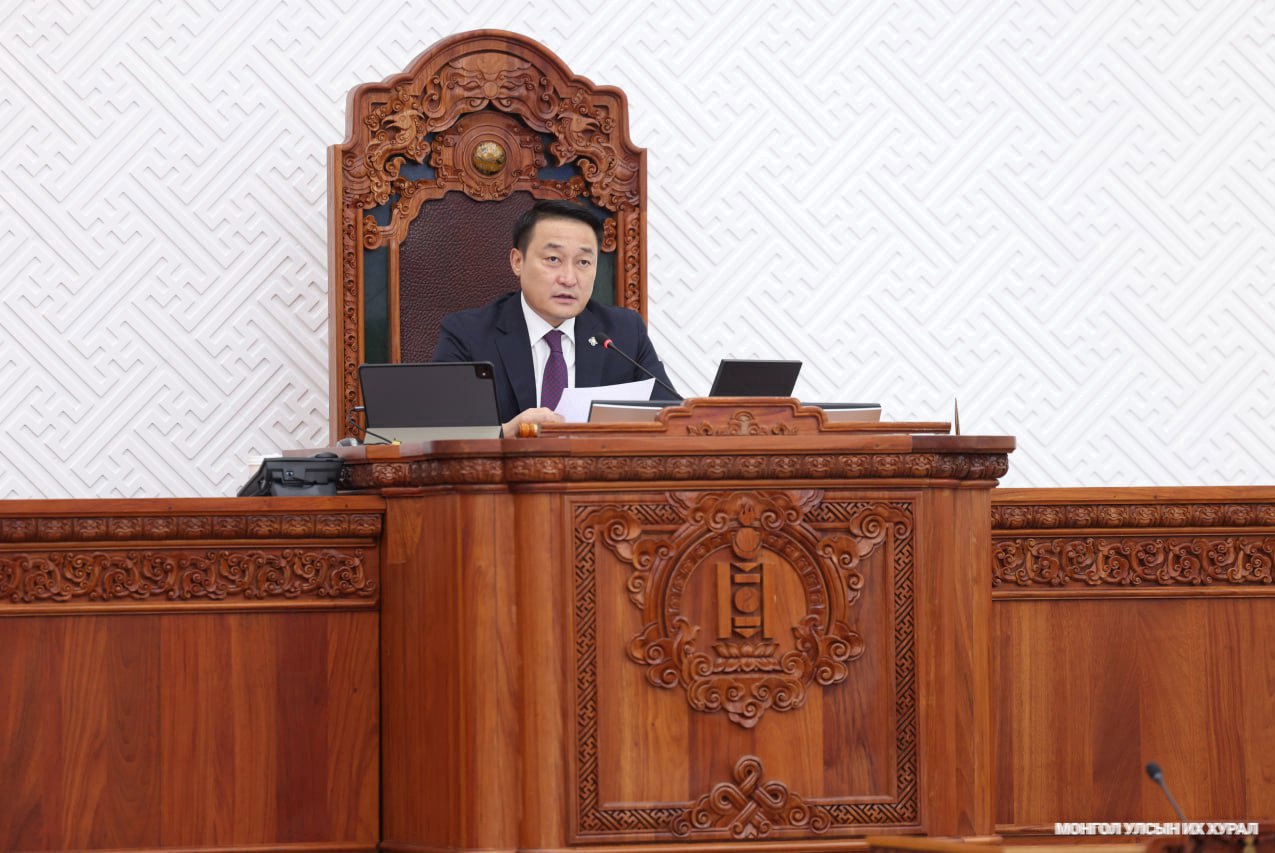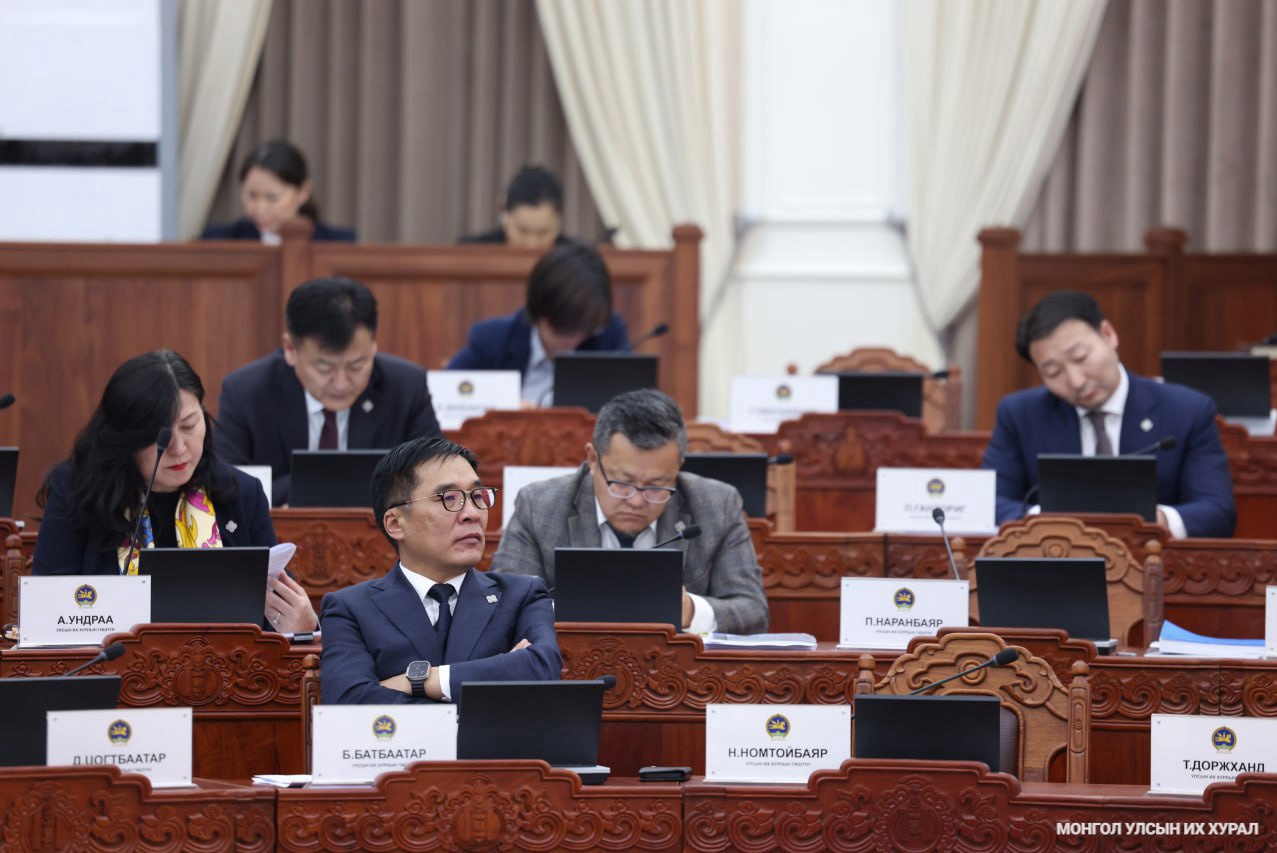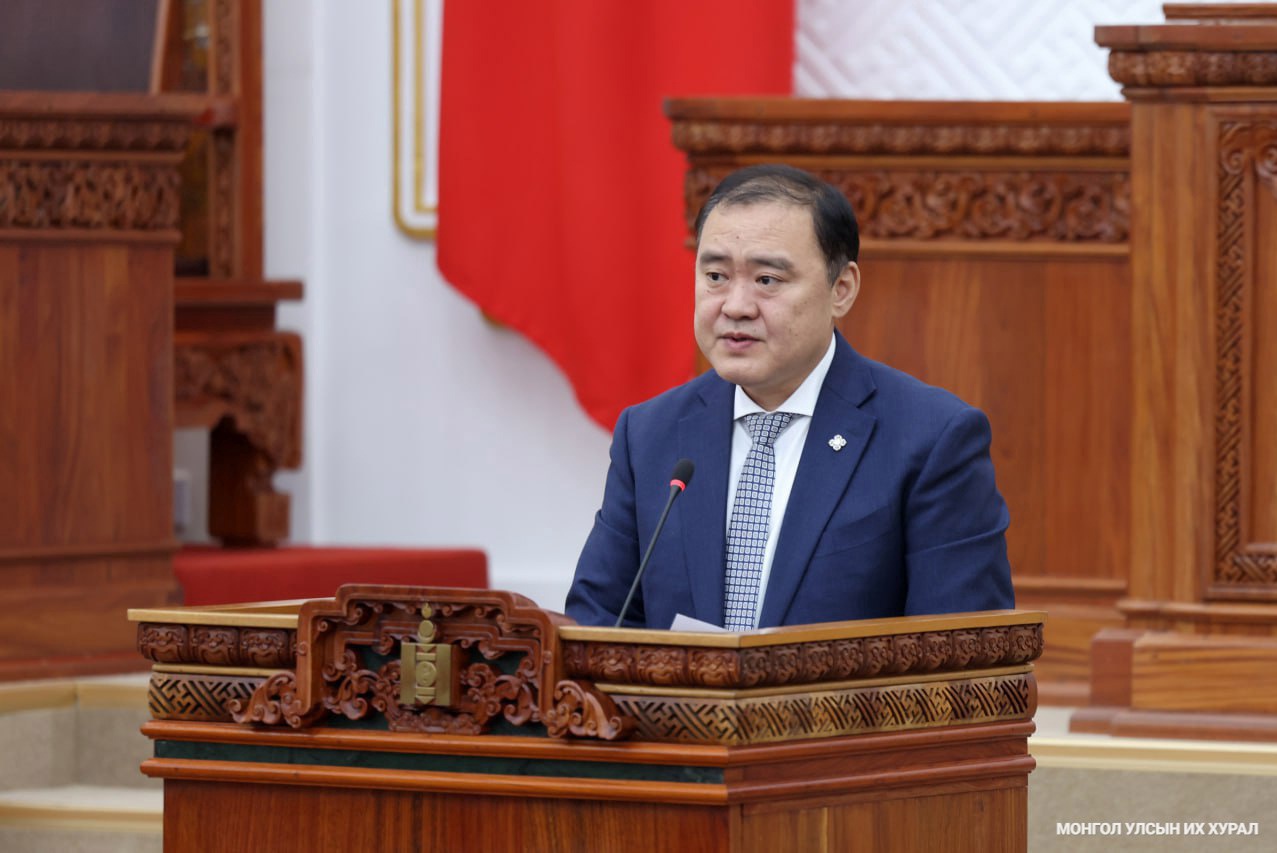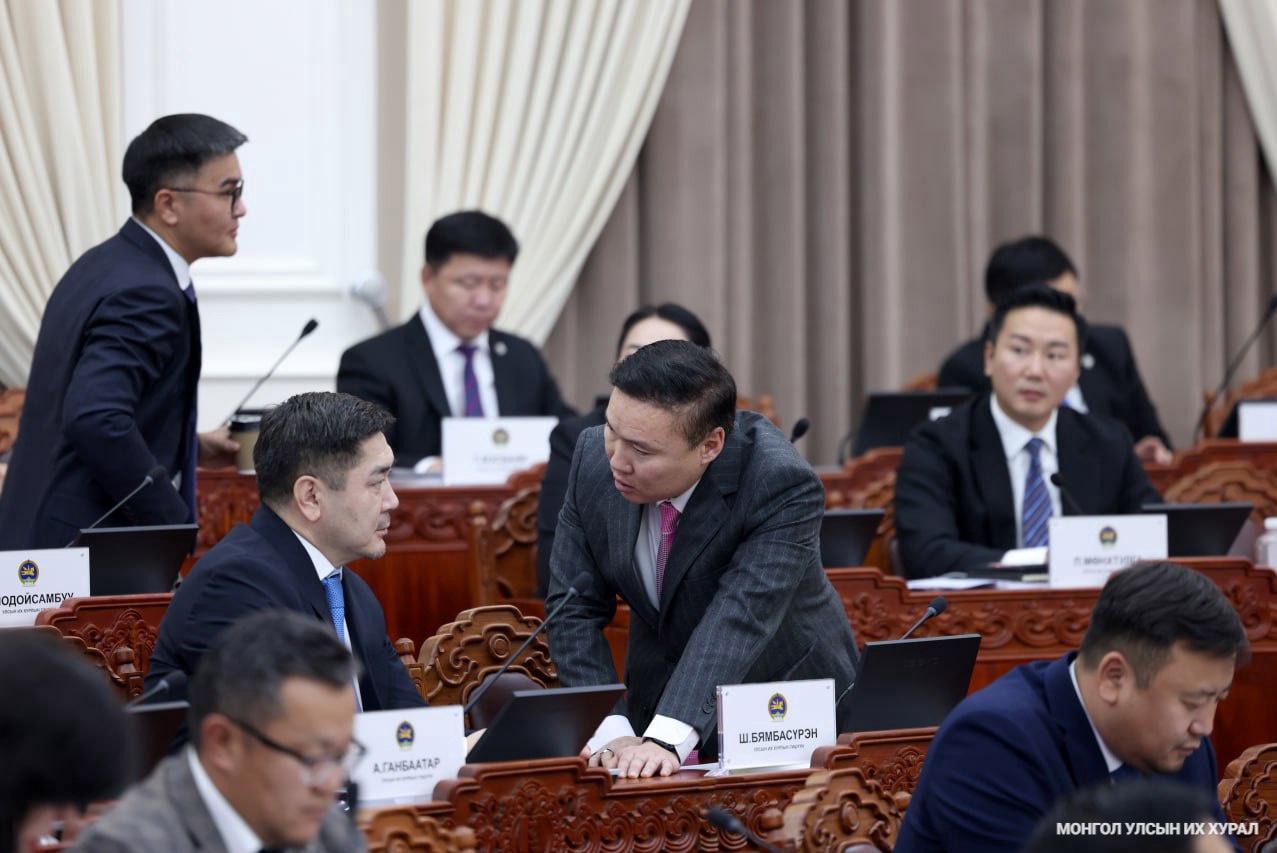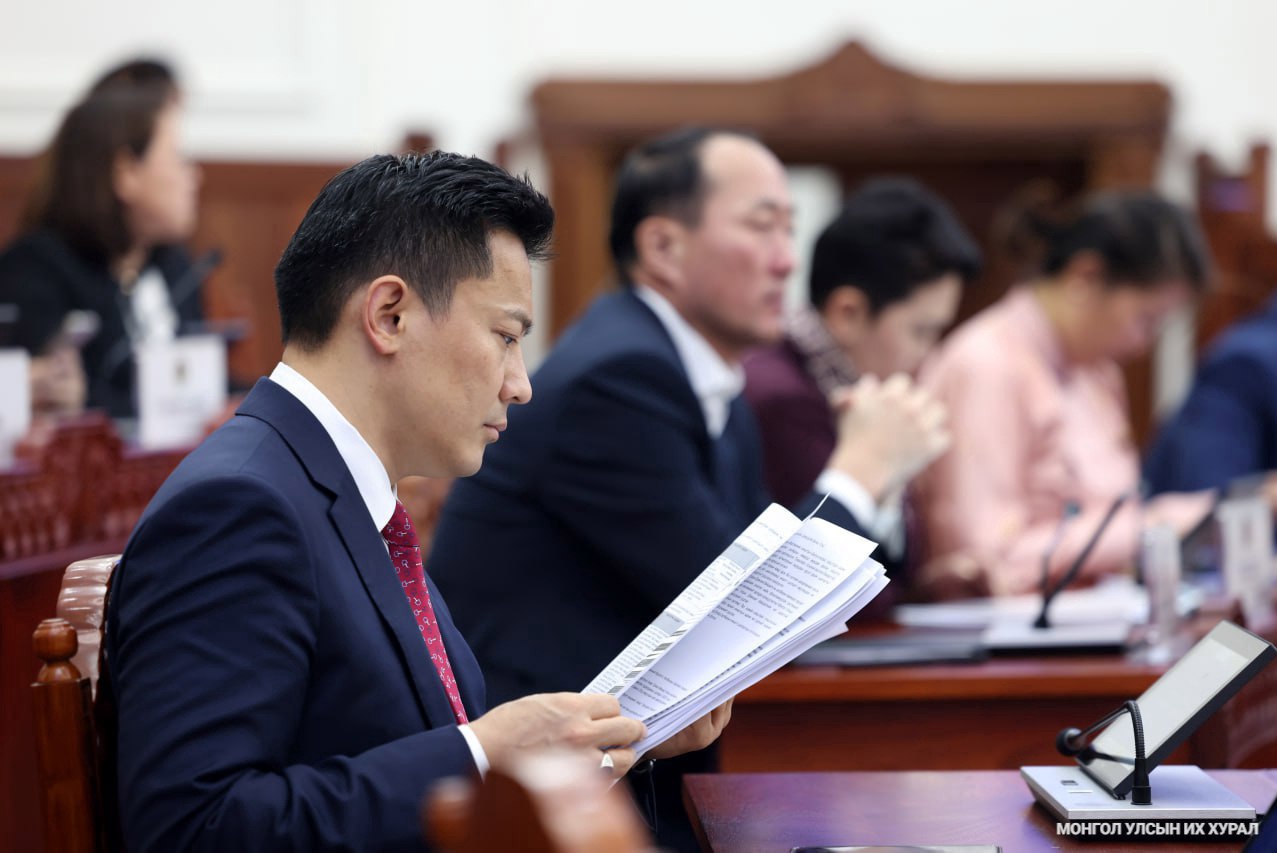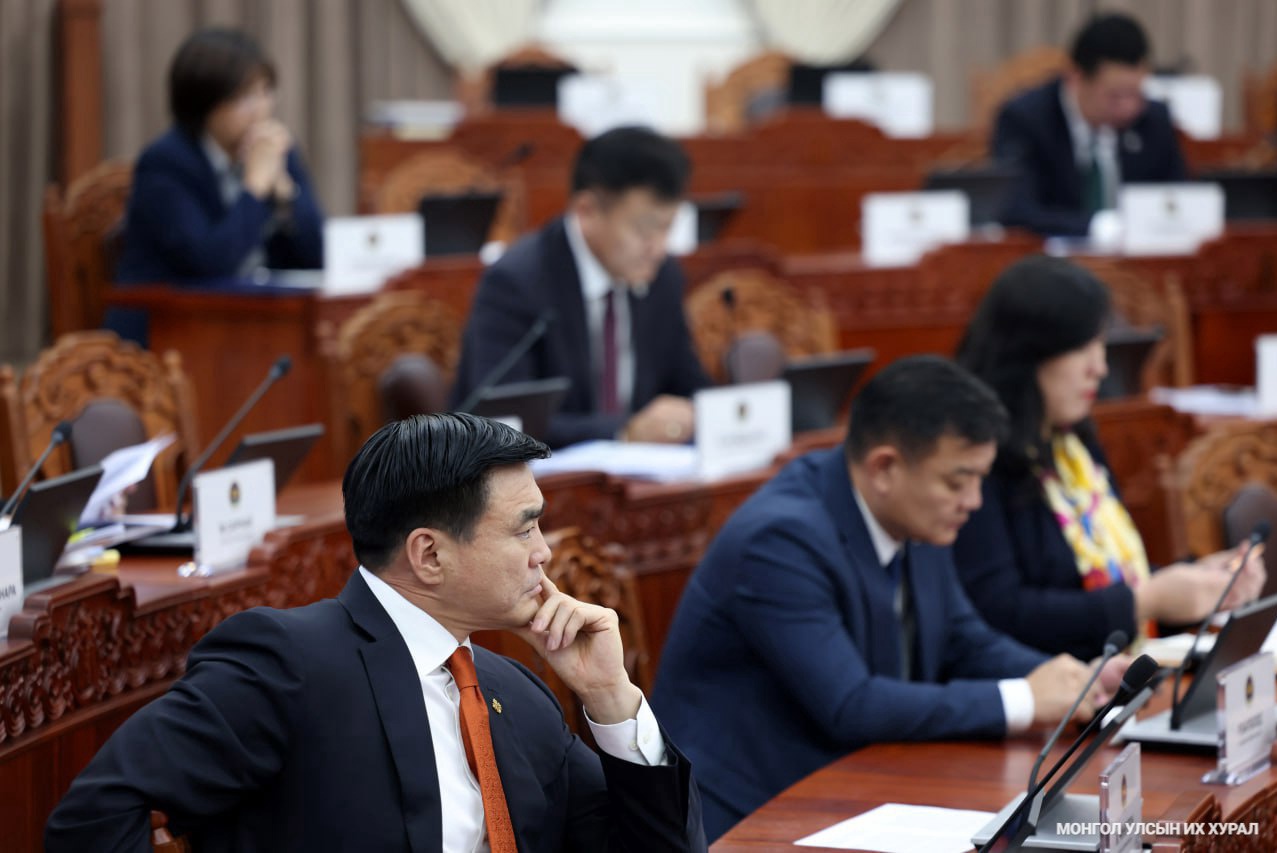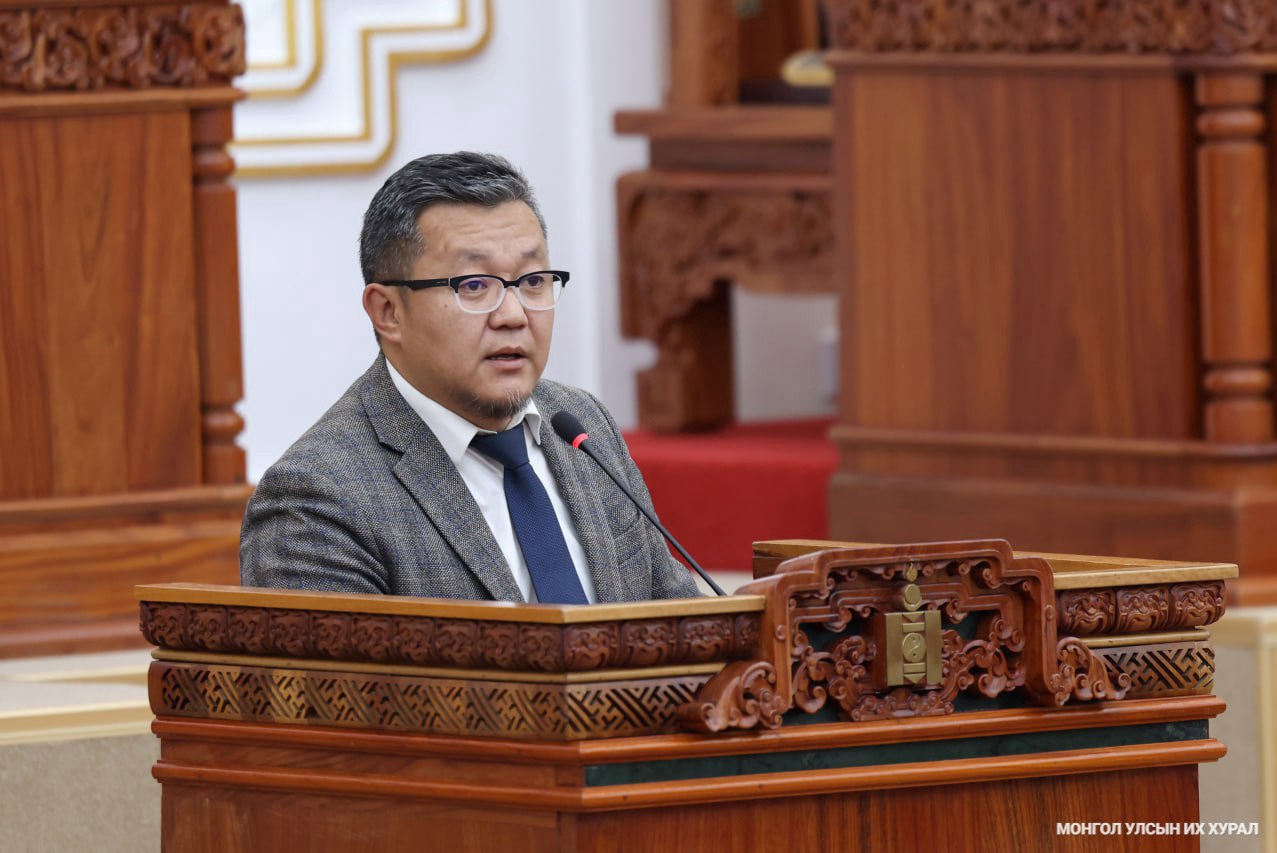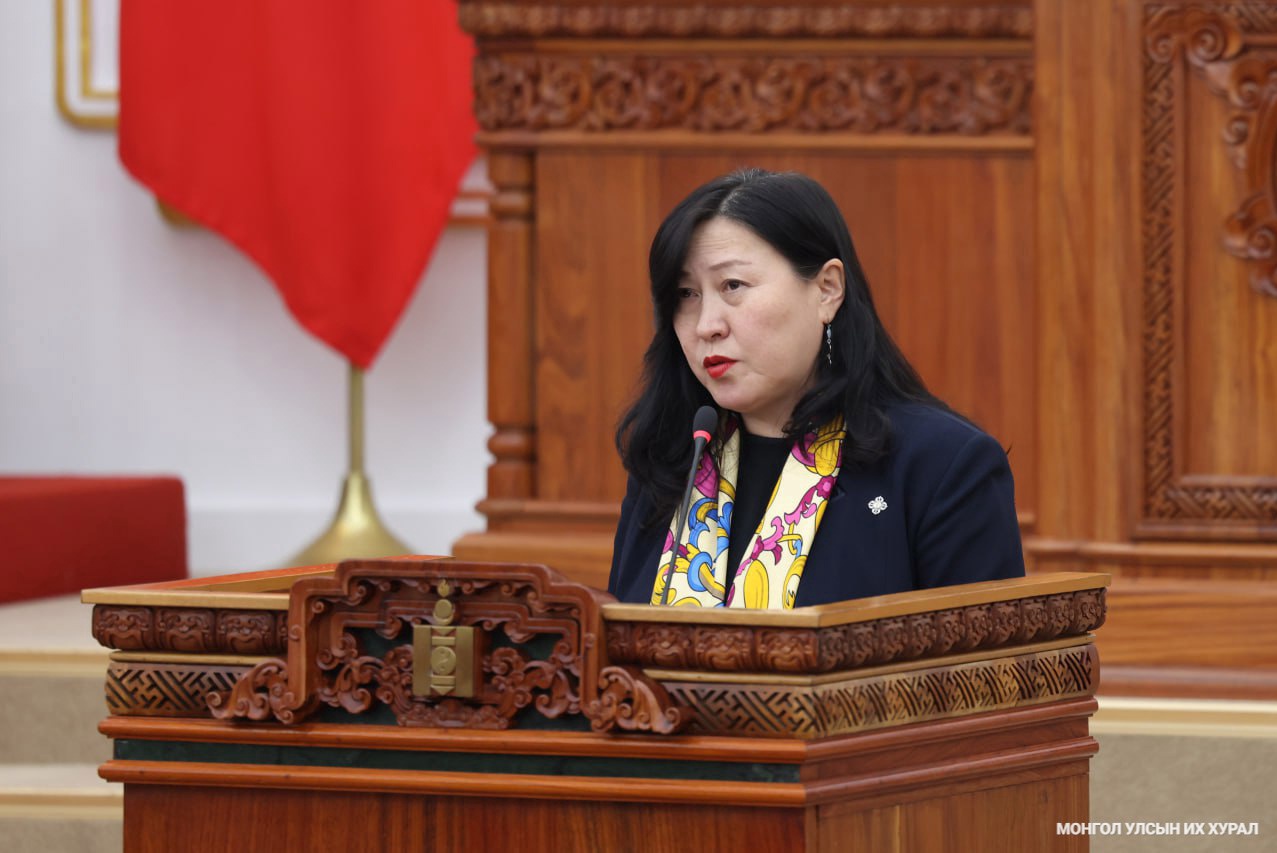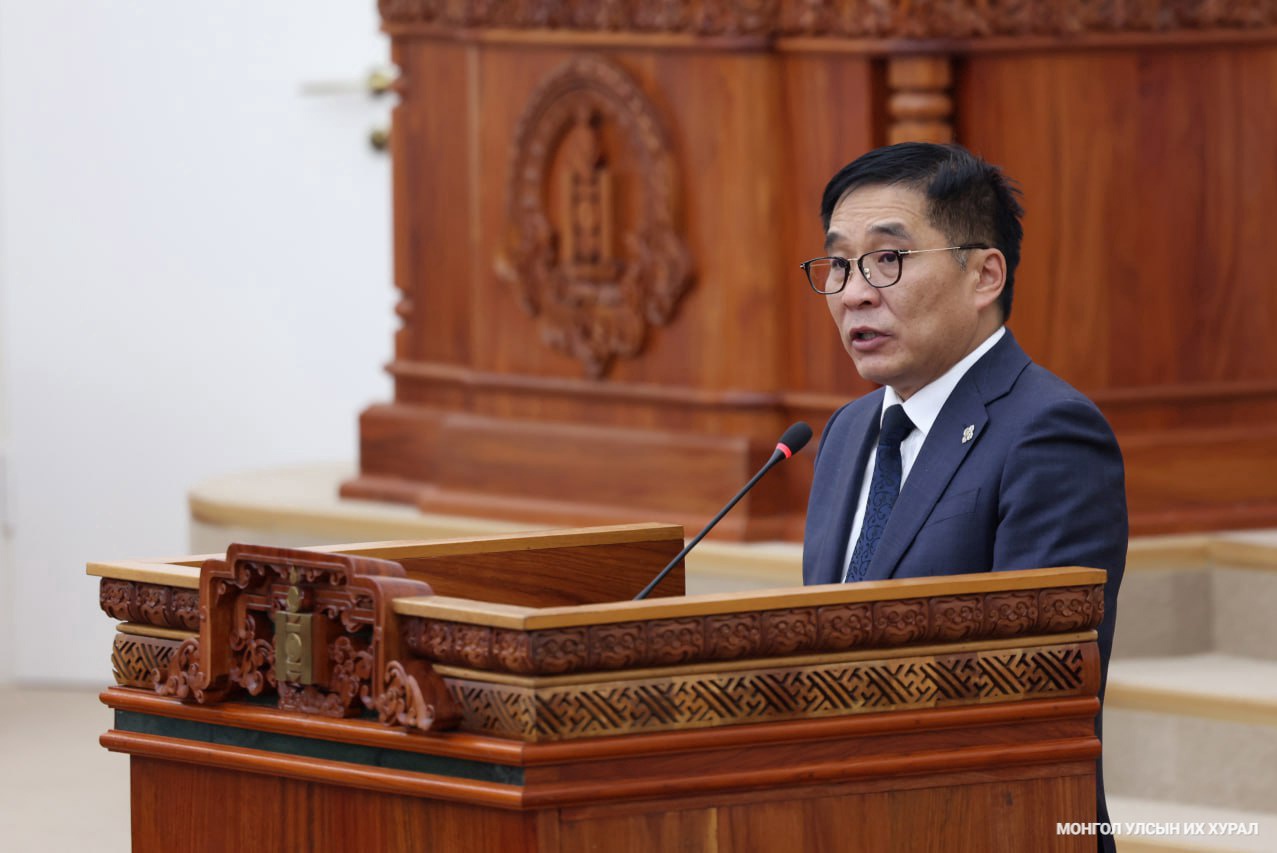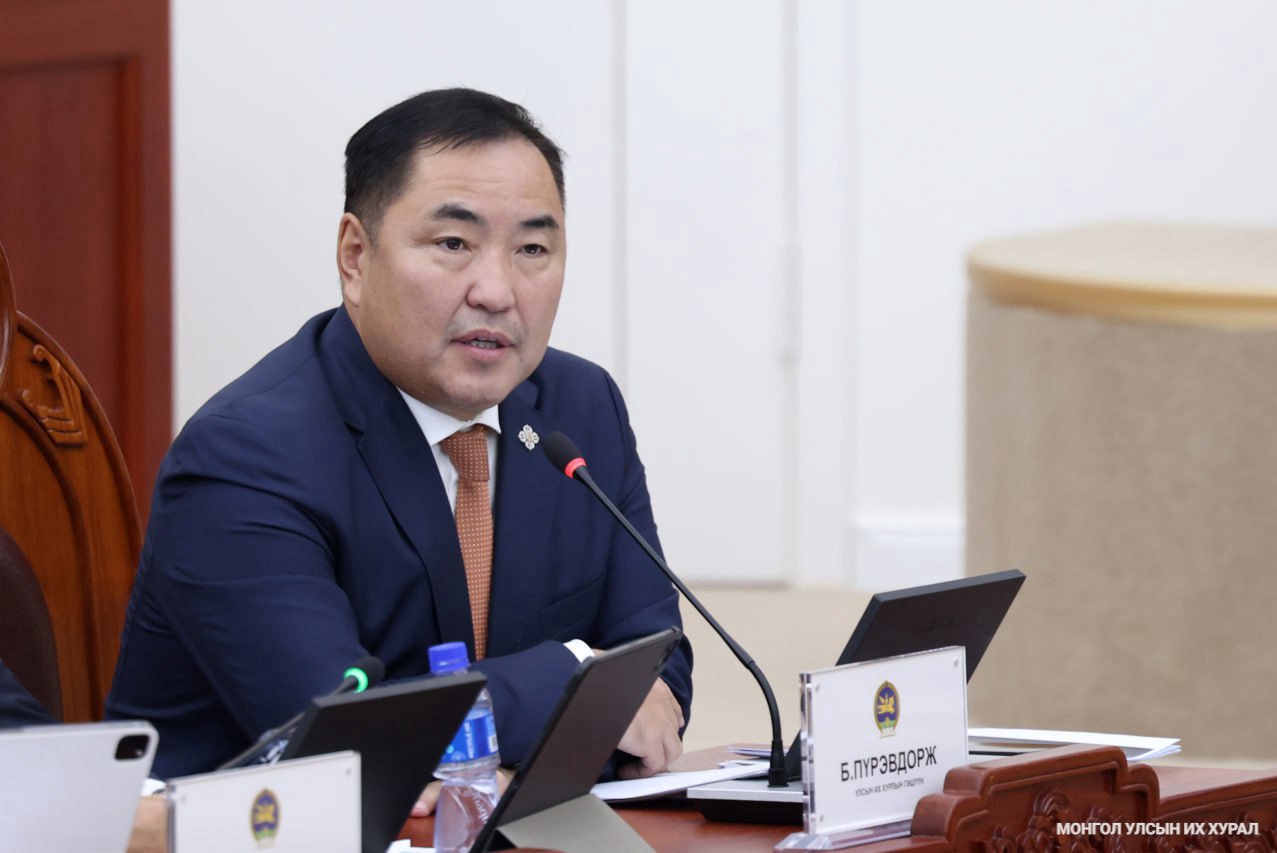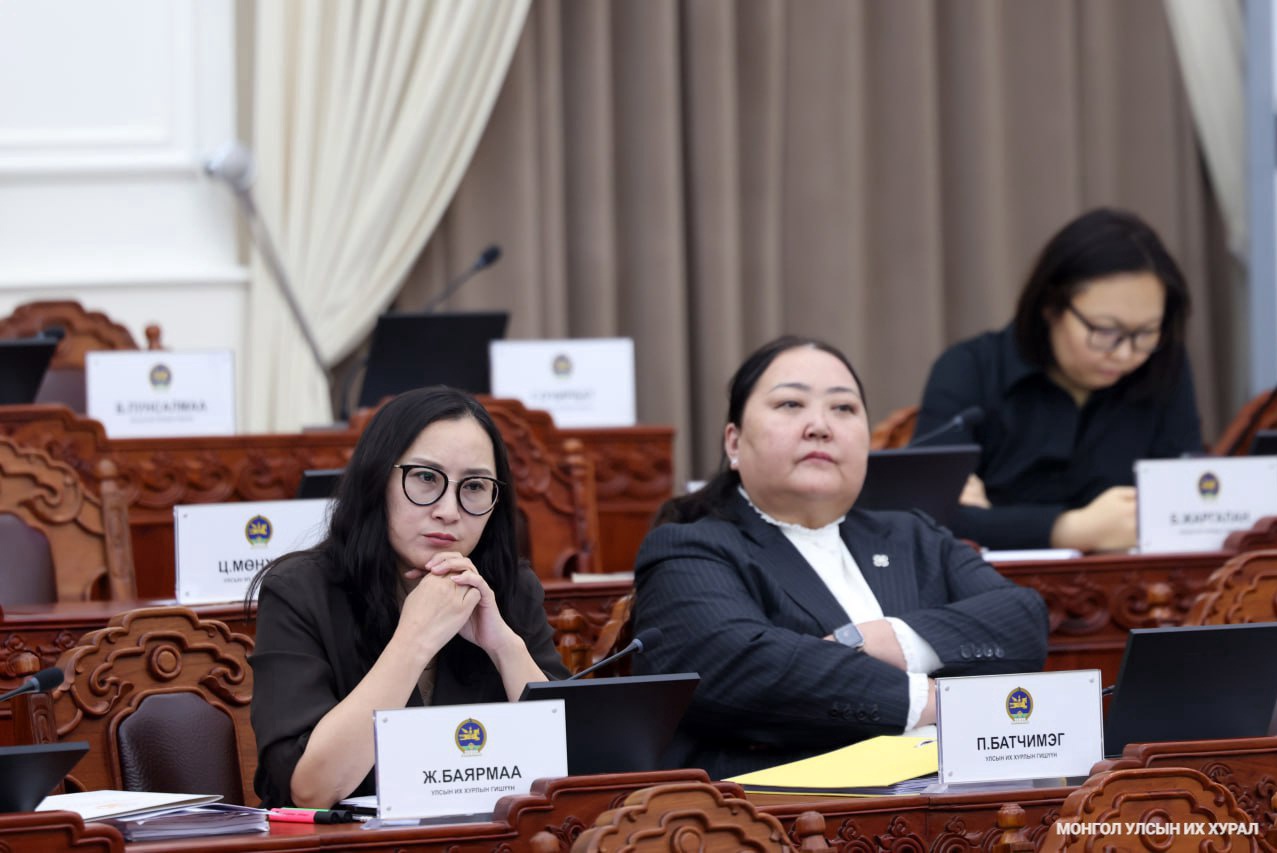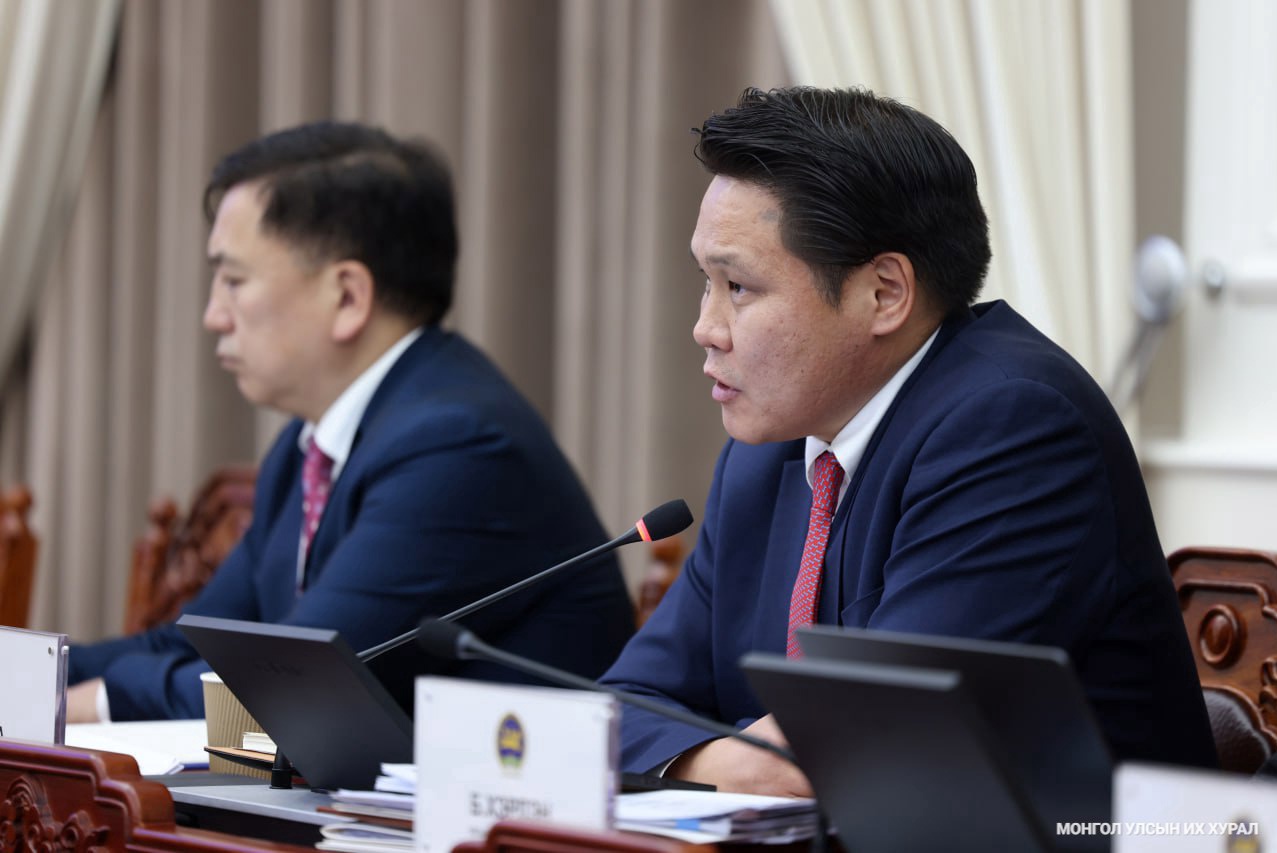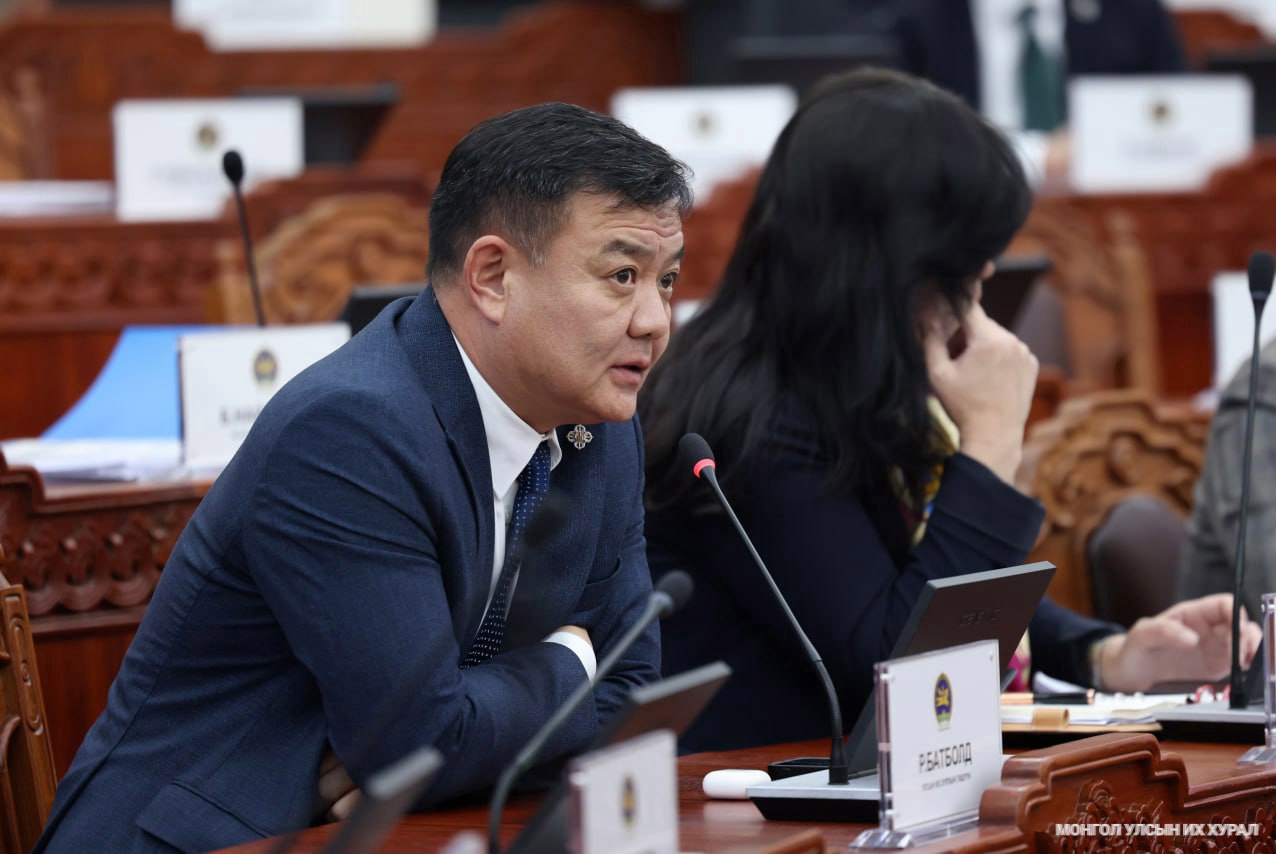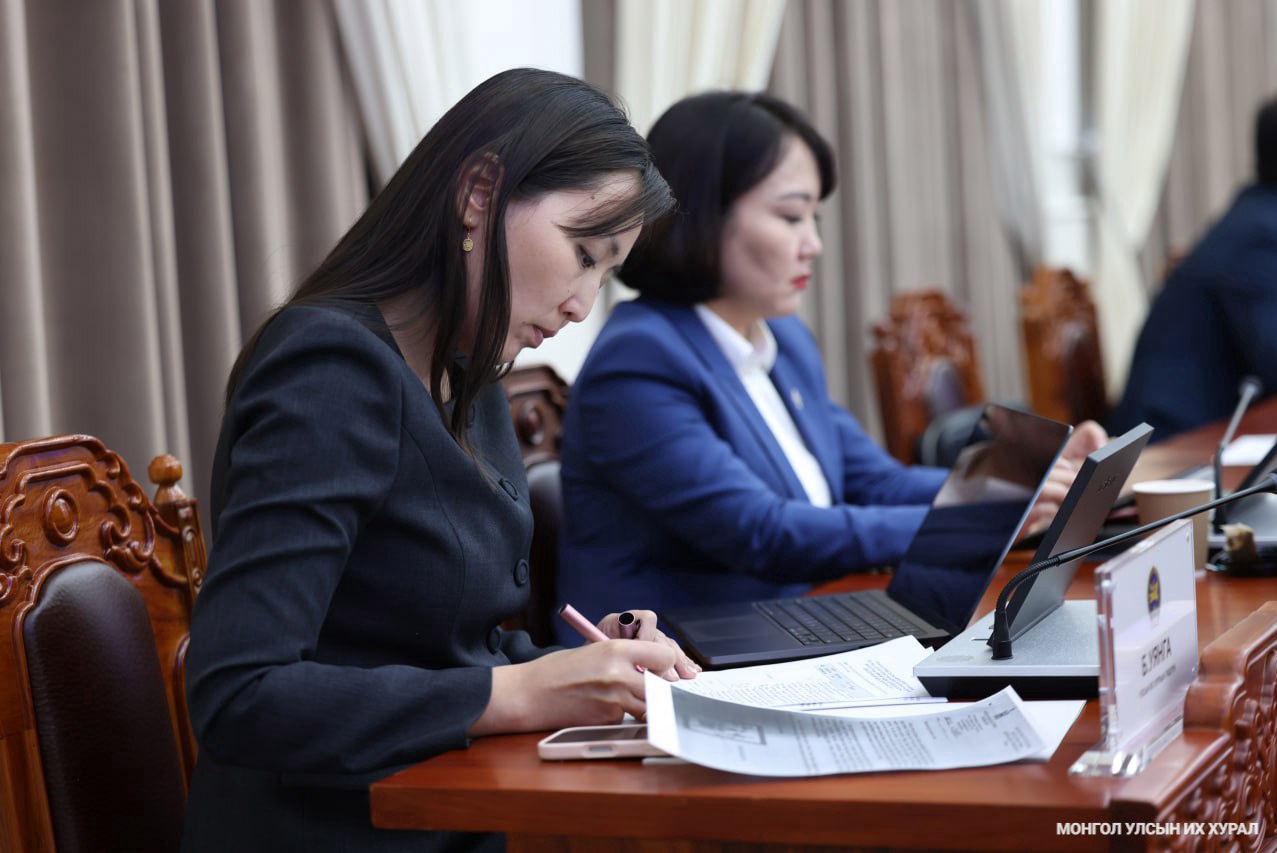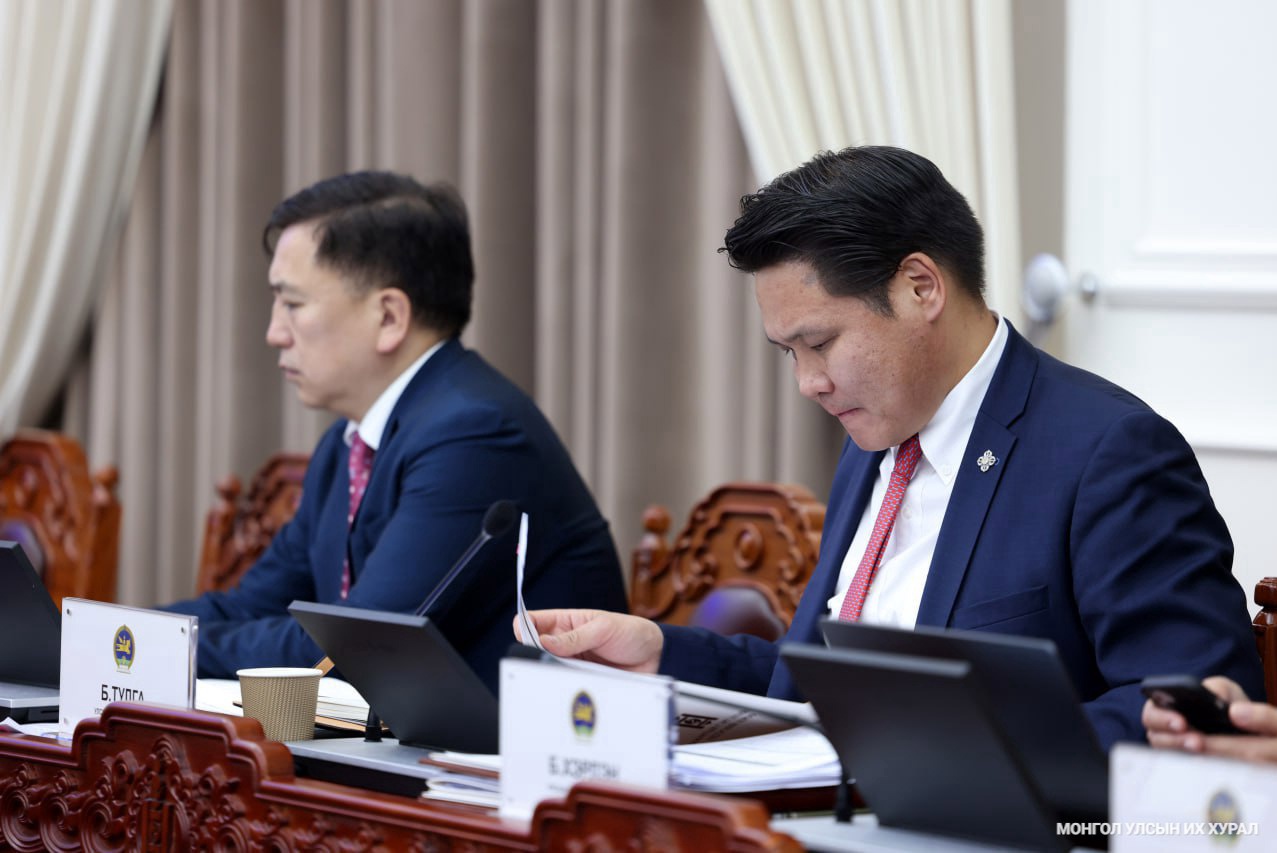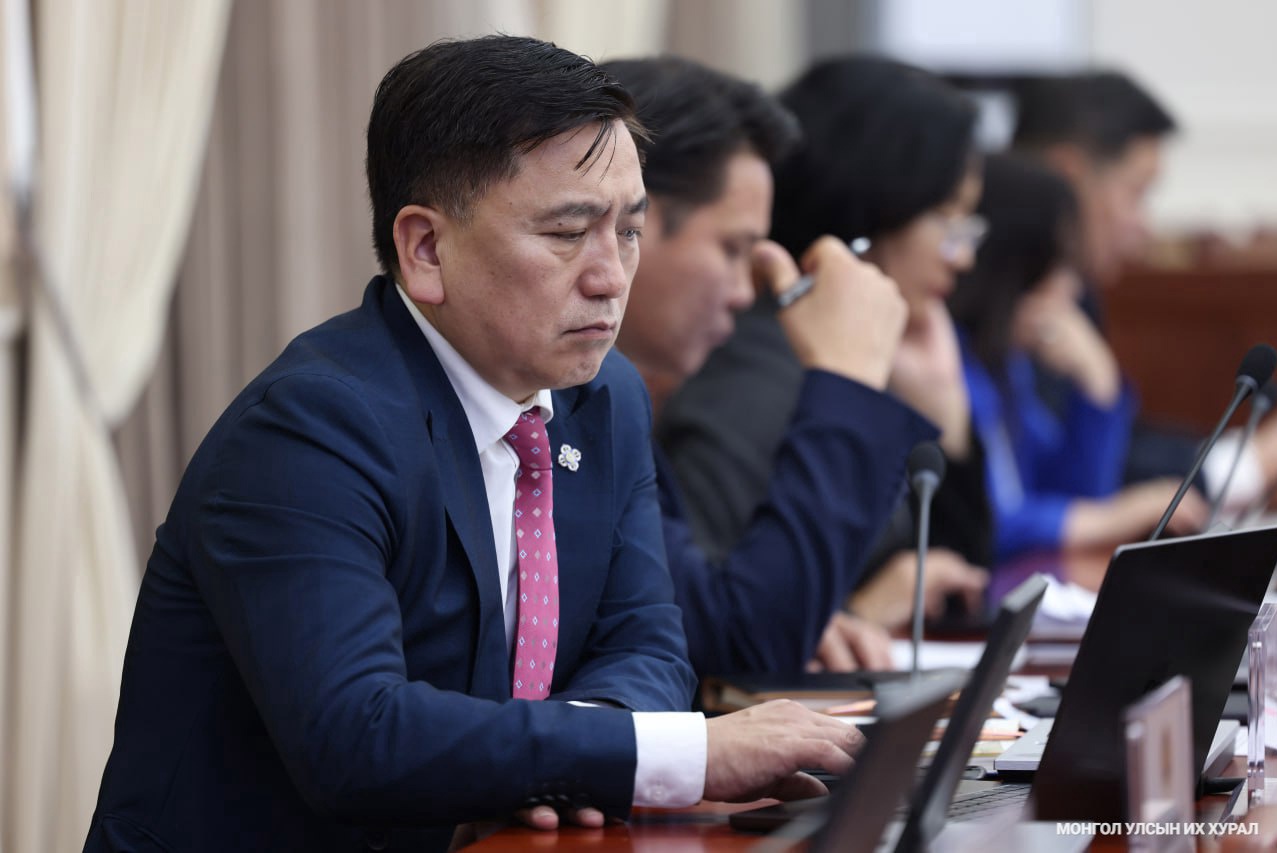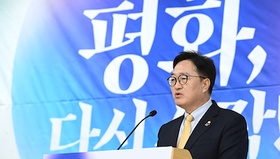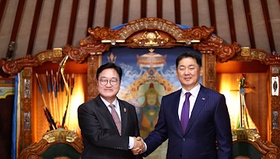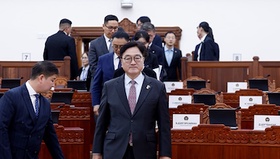The afternoon plenary session of the State Great Hural (Parliament) for the 2024 autumn regular session commenced at 3:10 p.m. on October 25, 2024. In accordance with the Law on Parliamentary Procedure, which mandates that Government updates be presented during the final Friday afternoon session of each month, the Parliament received a briefing on the implementation of the Port Revitalization Policy under the "New Recovery Policy." MP, Member of Cabinet, and Deputy Prime Minister L. Gantumur, who also serves as Minister of Economy and Development, delivered the presentation.
The Government introduced the "New Recovery Policy," a medium-term strategic program aimed at enhancing economic resilience and independence, mitigating the adverse economic effects of the post-pandemic period, and addressing six critical constraints on development. This policy seeks to expedite solutions to these constraints through improved economic infrastructure, governmental efficiency, and productive public-private partnerships. As part of the six packages within this policy, the Port Revitalization Policy encompasses four main initiatives.
First, to bolster export capacity and improve cargo and passenger throughput, the Government has undertaken developments in both hard and soft infrastructure at key ports. Expansions and construction projects at the Zamiin-Uud and Gashuunsukhait ports, funded through the state budget and grant aid from China, have been completed and are now operational.
At Zamiin-Uud Port’s passenger transport complex, the number of entry gates for import vehicles has been expanded from 8 to 20, and export gates from 4 to 24. The complex now features modern automated registration systems linked to a centralized control center, complete with comprehensive utility infrastructure and high-capacity scanning technology, allowing for fast and convenient processing for both passengers and vehicles.
The new cargo facility at Zamiin-Uud Port has also seen a significant upgrade, with import vehicle gates increased from 3 to 22 and export gates from 2 to 5. The facility includes 28 buildings, a full suite of utility infrastructure, an 11-kilometer power supply line, substation, lighting for the premises, and security systems such as cameras and perimeter fencing, all of which are now operational.
At Gashuunsukhait Port, infrastructure improvements have similarly expanded processing capacity. The number of entry gates for imports has been increased from 1 to 3, export gates from 1 to 3, and export gates for coal transport from 6 to 10. Modernized with international-standard intelligent gates, auto scales, heavy-duty roads, x-ray scanners, disinfection stations, canine facilities, laboratories, and surveillance systems, the port's throughput capacity has effectively tripled. Additionally, within the port expansion program, 90% completion has been achieved on housing for border control staff, a substation building, external heating, and water supply lines in Khairkhan district of Umnugobi Province, as reported by Minister L. Gantumur.
The construction of the Tsagaandel-Uul Port is advancing, supported by budgetary investments and financial aid from China. Currently, master planning, feasibility studies, environmental assessments, and design work are 82% complete. Comprehensive development of this port will commence in 2025, including buildings, utility networks, a settlement area, a 12-lane heavy-duty highway for coal, mineral, and freight transport, as well as a 6-lane road for tourism and passenger inspection.
Further updates included information on several other ports undergoing development funded by the state. The Borshoo Port’s expansion has resulted in a 3.5-fold increase in total area, with passenger capacity increasing 4.8 times, freight vehicle processing 3 times, and passenger vehicle throughput 6.7 times.
At Altanbulag Port, recent upgrades have introduced 19 passenger transport buildings, 18 cargo facilities, 5 infrastructure buildings, and complete utility networks. The port now features a 1.7 km, 4-lane road with green landscaping, parking facilities covering 7,000 m², and an internal network of 30,000 m² designed for rapid passenger and vehicle processing with modern, automated gates.
The Sukhbaatar Port’s one-stop service complex has been expanded and modernized. The Bichigt Port’s capacity has also significantly improved, tripling in area and quadrupling in passenger throughput, with freight and passenger vehicles both seeing a substantial increase in handling capabilities.
Additionally, as part of the "Sustainable Trade and Border Efficiency Project," financed with $106.3 million from the Asian Development Bank and scheduled for 2024-2030, preparations are underway for expanding and upgrading the Khavirga, Bulgan, and Tsagaannuur ports.
With Mongolia's trade balance showing positive developments, efforts to streamline cross-border trade along the Central Asia Regional Economic Cooperation (CAREC) corridor are underway. According to the World Trade Organization's Trade Facilitation Agreement, the deadline for establishing a “Single Window” is set for December 31, 2025. To expedite this, the Mongolian Government launched the "Foreign Trade Unified Digital Window Program" in 2023, aiming to simplify foreign trade processes through a unified electronic platform. Deputy Prime Minister and Minister of Economy and Development L. Gantumur provided further details on private investment-driven initiatives in infrastructure, including multipurpose transportation, loading, and transshipment terminals.
As a result of staggered improvements to border post operating hours and categories, Mongolia's foreign trade volume reached $20.4 billion by the third quarter of 2024—a 12.7% increase compared to the same period last year. To accommodate the operational needs of agencies stationed at border ports, agreements have been made to extend hours and, in some cases, pilot weekend operations.
Under the Port Revitalization Policy, ongoing efforts aim to connect border posts through rail and paved highways, enhancing transport and logistics competitiveness and laying a foundation for Mongolia’s potential as a transit country. The planned infrastructure expansion includes constructing 2,650 km of paved highways and 4,600 km of railway, connecting 11 ports by road and 4 by rail.
Under the third pillar of the Port Revitalization Policy, Mongolia is advancing airspace management and optimizing air route usage to increase transit flights. This approach, in line with gradual liberalization in air transport, aims to establish Mongolia as a central freight hub while bolstering the tourism sector. Plans to establish a new airport at “Deglii Tsagaan” in Uvs aimag are currently underway, and construction at Khentii’s “Undurkhaan” Airport, classified as 3C, is now 90% complete. Additional projects include elevating Khovd’s “Khovd” Airport and Khuvsgul’s “Murun” Airport to 4C, expanding Chinggis Khaan International Airport for sustained international operations, and upgrading Dornod’s “Choibalsan” Airport and Umnugobi’s “Gurvansaikhan” Airport to 4D status, supporting a significant increase in passenger and cargo capacity.
In line with Mongolia's Regional Development Policy, the Port Revitalization Policy promotes establishing free trade and dry ports to expand trade turnover. An agreement was reached to create internationally-standardized dry ports at eight locations: Altanbulag, Sainshand, Ulaanbaatar, Zamiin-Uud, Choibalsan, Khovd, Khushig Valley (Central aimag), and Bichigt (Sukhbaatar aimag). These dry ports are expected to reduce costs for consumer goods, lower transportation expenses and delivery times, and improve transit revenues while enhancing domestic trade volumes.
Emphasizing regional economic integration, the government is aligning border policy with regional development objectives to strengthen local economies and boost Mongolia’s competitive standing in global trade. Noting how leading countries use large logistics hubs with vast lands for streamlined, professionally managed services, Minister of Economy and Development L. Gantumur highlighted that Mongolia's borders should evolve beyond customs checkpoints to become profitable economic centers that drive regional development. As part of this initiative, the government is currently drafting a comprehensive Border Law to improve the legal environment for sustainable border development.
During discussions on the implementation of the Port Revitalization Policy under the New Recovery Policy, Minority Representative MP O. Tsogtgerel, representing the Democratic Party group in Parliament, emphasized the need for Mongolia to enhance infrastructure, customs operations, and logistics services. He acknowledged the government’s efforts to address these areas through targeted programs but highlighted that beyond physical infrastructure and investments, there must be a proactive focus on "soft infrastructure." This includes legal and regulatory reforms, initiatives to facilitate trade, and simplification of border and customs services.
MP Tsogtgerel further underscored the importance of ongoing railway development projects, transit highways, and the connection of border checkpoints with paved roads. He also noted the strategic value of positioning Mongolia as an air transit hub, emphasizing that these infrastructure projects are crucial for economic growth and regional connectivity.
MP J. Zoljargal, representing the minority, emphasized in his speech regarding the information mentioned above that the implementation of the Port Revitalization Policy is effective and significant. He noted that the level of customs digitalization has reached a new stage, and efforts should be intensified to facilitate the exchange and integration of information between border organizations and customs, which are currently in the trial phase. He stressed that the government needs to pay special attention to realizing the benefits of these significant investments in construction and infrastructure, while also presenting his views on the conditions of coal export transportation and solutions for improvement.
MP A. Undraa, representing the minority, noted in her speech that she acknowledges the investment efforts made within the framework of the Port Revitalization Policy, but expressed concerns that issues related to human resources and the working and living conditions of those employed at the border crossings have been overlooked. She also emphasized the need to ensure intersectoral coordination and effective policy planning. In connection with this information, B. Batbaatar, another member representing the minority, also spoke. He expressed his views on optimizing the administrative operations of border and customs organizations, connecting border crossings with railroads and paved roads, and improving the competitiveness of transport logistics to enhance cargo flow. He also reminded that it is essential to consider the environmental and social impacts when implementing major infrastructure projects.
Following the information provided by Minister L. Gantumur regarding the implementation of the Port Revitalization Policy outlined in the "New Recovery Policy," representatives of the minority spoke, asking questions related to the information. MP B. Purevdorj mentioned that the cargo transportation capacity of the border crossings affects prices and expressed his views on the need to improve the legal framework of the border crossings. He emphasized that various measures are being implemented in phases to enhance the operations of the Zamiin-Uud border crossing. Additionally, B. Tulga, the Minister of Mongolia and Chairperson of the National Committee on Port Revitalization, informed that there are plans to establish a border crossing equivalent to Zamiin-Uud in the eastern and western regions. He also noted that efforts are underway to improve the legal framework of the border crossings, with plans to address these issues during the autumn session of the State Great Hural (Parliament) in 2024.
When MP O. Tsogtgerel inquired about the planning and implementation of the soft infrastructure initiatives being undertaken as part of the Port Revitalization Policy, he stated, "First and foremost, we must invest in the border crossings and improve our hard infrastructure. Alongside this, there are many management or soft infrastructure initiatives. It is necessary to change the perception that a border crossing is merely a place for inspections and checks, and to shift the mindset and approach. Studies of successful border crossings in other countries indicate that a collaborative management model between the government and private sector, or purely private sector management, tends to be more effective. For this reason, the amendment to the Port Law includes a proposal for the management of the border crossings to be in the form of a corporation led by representatives of the private sector under government oversight," responded Minister B. Tulga.
MP J. Bayarmaa emphasized that the operations of the border crossings are directly linked to the cost of living and inflation, and inquired whether the policy in this area has been aligned with neighboring countries, given the geographical characteristics. He noted that meetings of the border management commissions between Mongolia and the People's Republic of China are held annually, and in the 2023 meeting, they agreed to address 40 issues as per the protocol. Currently, 36 of these issues have been resolved, and it is assessed that the implementation is sufficient. Regarding this year's meeting, the Minister of Mongolia and Chairperson of the Port Revitalization National Committee mentioned that no date has been set due to changes in the management of the border on the Chinese side, but it is planned to hold the commission meeting within this year once a decision is made.
MP R. Batbold sought clarification on issues related to coal export transportation and border crossings, receiving detailed answers and information from the Minister of Transport, B. Delgersaihan. MP G. Ganbaatar inquired about the construction of the Tsagaan Del Uul border crossing and the implementation of decisions related to this crossing, receiving a response from Minister B. Tulga. MP B. Batbaatar raised issues concerning increasing cargo transportation turnover, facilitating and expediting citizens' border crossing processes, enhancing and making free zones more effective, and increasing the number of terminals for receiving imported cargo, also receiving answers from Minister B. Tulga.
After the MPs questions and received answers, in accordance with Article 112.9 of the Rules of Procedure of the State Great Hural (Parliament), representatives from each party group inquired about questions submitted by citizens regarding the information published on the official website of the State Great Hural (Parliament). In connection with the implementation of the Port Revitalization Policy outlined in the "New Recovery Policy," MP B. Uyanga, representing the MPP group in the State Great Hural (Parliament), presented five questions received from three citizens on the d.parliament.mn website.
Citizen Sarantuya inquired about the implementation of the Port Revitalization Policy, specifically asking whether there are plans to construct roads in the directions of Khoshoot, Burgastai, Shiveekhuren-Shinejinst, Khotgor Shanaga, and Dayangiin ports, as well as about the connection of railways at the border. She also sought clarification on the construction of the heavy-duty road from Tavantolgoi to Tsagaandel Uul, which has been stalled due to local residents' opposition. Citizen Oyuntuya asked about the railway connection at the Gashuunsukhait-Gants Mod port, while Citizen Munkhjargal inquired about what the "New Recovery Policy" aims to address.
In response to the question regarding plans for road construction in the directions of Khoshoot, Burgastai, Shiveekhuren-Shinejinst, Khutgur Shanyaga, and Dayangiin ports, Minister B. Tulga stated, "The decision to construct roads to the ports is based on research regarding the potential for bilateral trade and tourism development. To invest in any port and establish infrastructure, a feasibility study and design must be in place. We are currently conducting feasibility studies and designs for road construction in partnership with the private sector for Shiveekhuren, Khoshoot, and Burgastai, as well as from Khoshoot to the Baitag port. Similar studies and designs for the road to Dayangiin port have also been initiated. Regarding Khotgor Shanaga, we will not be transporting mining products to Dayangiin port because it is located in Mongolia's most beautiful protected area, the Altai Five Bogd. I would like to emphasize that we aim to develop and engage in tourism in collaboration with the other side."
In response to the question about the construction of the heavy-duty road from Tavantolgoi to Tsagaandel Uul, Minister B. Tulga stated, "We announced the concession for the construction of a 270 km heavy-duty paved road to the Tavantolgoi-Tsagaandel Uul border crossing in 2019, and a company has been selected and is ready to commence operations. During the Prime Minister's visit to this province in 2022, residents expressed their concern about the environmental impact of this project. As a result, the work was suspended, and the company was instructed to engage with local residents and minimize the environmental impact. Additionally, I was tasked with discussing and resolving this issue with MPs elected from the desert regions and representatives from the desert sub provinces. We are awaiting the detailed assessment and design before consulting with the parties involved." Minister B. Delgersaikhan added that a working group was established at the direction of the Prime Ministerof last week, comprising the Ministry of Industry and Trade and the Ministry of Transport, to work at the Tsagaandel Uul port. Thus, after hearing the information regarding the implementation of the Port Revitalization Policy included in the "New Recovery Policy" and providing answers to questions raised by citizens, the government’s briefing concluded.
At the end of the plenary session of the Parliament on this day, Chairman D. Amarbayasgalan presented the final draft of the resolution on the transfer of state property to municipal ownership.

 Eng
Eng  Монгол
Монгол